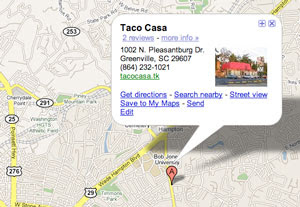 That being said, no organization should be stuck with a jpg alone, but jpgs are great files. They can be used on the web, inserting into word files, or even into powerpoint documents. Now sometimes, you may try to insert a jpg into a word document, lets say, and you will only see a black box, or a box with a red "X". This normally means that the jpg is in the wrong color format, CMYK instead of RGB, but those are later posts. The jpegs are set restrict by the size of those blocks, known as dots per inch or DPI. The number of dots, or color blocks, per inch determine how crisp the image is. If there are only 72 dots per inch, as is the standard on the Internet, can not be used in professional printing, which has a standard of 300 dots per inch. What does that mean, please don't pull a logo off of a website and try to print it in a brochure.
That being said, no organization should be stuck with a jpg alone, but jpgs are great files. They can be used on the web, inserting into word files, or even into powerpoint documents. Now sometimes, you may try to insert a jpg into a word document, lets say, and you will only see a black box, or a box with a red "X". This normally means that the jpg is in the wrong color format, CMYK instead of RGB, but those are later posts. The jpegs are set restrict by the size of those blocks, known as dots per inch or DPI. The number of dots, or color blocks, per inch determine how crisp the image is. If there are only 72 dots per inch, as is the standard on the Internet, can not be used in professional printing, which has a standard of 300 dots per inch. What does that mean, please don't pull a logo off of a website and try to print it in a brochure.
MMSA Awards Community Development Grants
4 years ago





 DI) create a marketing identity.
DI) create a marketing identity. 



 So we created this progressive new logo, made up of a defined color palette, contemporary san serif font, and icon, comprised of four images, representing the Main Street Four Point Approach®. We also introduced a new program tagline: four points for progress. We felt like these fours words summed up the efforts of this statewide support network network. We created different versions of the logo, depending on where they would be used, for example, on a national level, Mississippi is larger, helping to make it stick out from other state coordinating programs. On the local level, we even created a simple version of the four blocks and MMSA, allowing local communities to roll the identity into their own marketing materials. One of the best parts about this system is its ability to promote the tenets of Main Street Revitalization approach with the four committee structure.
So we created this progressive new logo, made up of a defined color palette, contemporary san serif font, and icon, comprised of four images, representing the Main Street Four Point Approach®. We also introduced a new program tagline: four points for progress. We felt like these fours words summed up the efforts of this statewide support network network. We created different versions of the logo, depending on where they would be used, for example, on a national level, Mississippi is larger, helping to make it stick out from other state coordinating programs. On the local level, we even created a simple version of the four blocks and MMSA, allowing local communities to roll the identity into their own marketing materials. One of the best parts about this system is its ability to promote the tenets of Main Street Revitalization approach with the four committee structure.  We even created sub logos to help MMSA when training program managers and volunteers on those four points. Over the coming months, you will see this logo system begin to be incorporated in their website, stationary, and program materials, and we look forward to seeing the benefits that it has for the organization. For more information about the Mississippi Main Street program, go to
We even created sub logos to help MMSA when training program managers and volunteers on those four points. Over the coming months, you will see this logo system begin to be incorporated in their website, stationary, and program materials, and we look forward to seeing the benefits that it has for the organization. For more information about the Mississippi Main Street program, go to 



